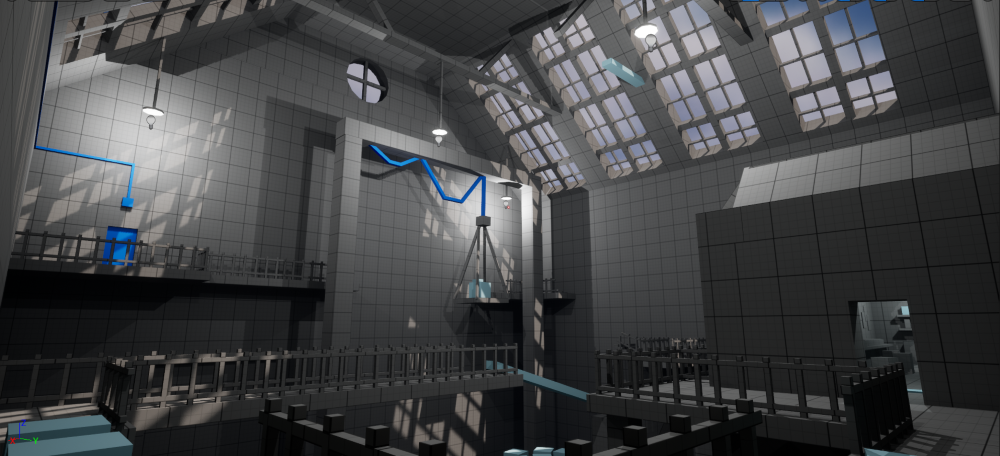
Skills: Level Design / Unreal Engine
During the summer between my second and third year of university, I set out to deepen my understanding of level design and refine my skills in Unreal Engine. This personal project allowed me to explore the creative and technical aspects of level design, helping to prepare me for third year with more confidence in my skills as a level designer, whilst also allowing me to approach future jobs with a solid skillset and portfolio.
The project was inspired by the weight mechanic in Quantum Conundrum, which served as a starting point for my creative vision. My goal was to integrate the lessons I learned from my university, with my own unique ideas in order to challenge myself to venture beyond my comfort zone and achieve a vision and goal I had in mind.
“I always did something I was a little not ready to do. I think that’s how you grow — when there’s that moment of, ‘Wow, I’m really not sure I can do this,’ and you push through.”
– Marissa Mayer, CEO of Yahoo
This mindset guided my approach to the project and continues to influence how I work today. University provided many opportunities to embrace this philosophy, and as I approach graduation, I’m committed to maintaining this drive to challenge myself and grow creatively.
Below are images showcasing the concept and development of my tutorial level, including early iterations, design plans, and the final level design. Each step of the process was documented in detail, and I’ve compiled my insights into a pdf document (available at the bottom of the page) that outlines my creative process and guides users on how the level is intended to be navigated. I proceeded to polish off my work this way, with the mindset of if I were to approach a team to create this level design and make a game from it.


The level takes place in an abandoned warehouse and introduces players to the M.A.S (Mass Adjustment System), a weight-manipulation mechanic and controller. The M.A.S allows players to adjust the weight of objects — making heavier objects lighter and lighter objects heavier. These heavy and light items are understood and shown to the player through specific prop design (for example, heavy items include sheets of metal, pieces of pipe and so on, whilst light objects are shown in the forms of cardboard and classically lighter materials. This is explored in the document linked at the bottom of the page) which allows for smooth and efficient gameplay. The level also serves as a tutorial, designed to help players become familiar with the mechanic through a series of progressively challenging puzzles and offers them a chance to get to know prop items scattered around.
The experience begins in the control room, where players can learn about the M.A.S controller through blueprints on the walls and subtle narrative clues embedded in the set dressing. To exit the control room, they must solve their first puzzle by correctly using the M.A.S to move a heavy object blocking the door. This progression (shown in the second image below and later, the linked document) establishes the foundational mechanics while immersing players in the environment.
I dedicated a week to this project and am proud of the results. Whether or not this concept evolves into something more substantial in the future, it has been an insightful opportunity to expand my skillset in level design and build upon my practical skills whilst level designing in Unreal Engine.




During the creative process of making this tutorial level design, I pulled knowledge from several videos I found, which offered many beneficial tips to further expand and grow my understanding of level design:
- Ten Principles for Good Level Design – GDC
- Spatial Communication in Level Design – Peter Field
- Unreal Engine 5 Live Class – Blocking Out Level Design – Ryan Layley
- Unreal Engine 5 | Level Design | Greybox Entire Levels in Minutes – 3D Tutor
- UE5: Complete Guide to Player Scale, Environment Dimensions and Creating to Proportions – World Of Level Design